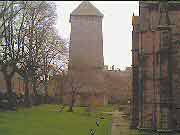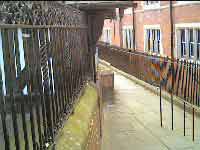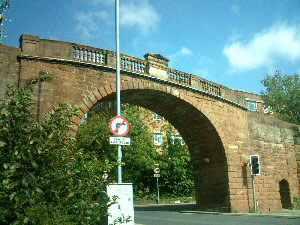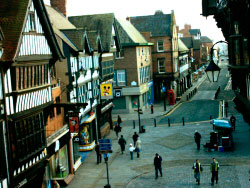 |  | |
|
Home |
Hotels | Guest Houses |
Chester Events |
Visiting Chester |
Parking |
Shopping |
Business |
Chester Pubs |
Restaurants |
Tickets |
Chester Live! |
Community |
Contact Us |
|
|

 |
Standing majestically close to the city centre of Chester on Eastgate Street, is the Eastgate clock. Chester's best known land mark and the second most photographed clock in the world after Big Ben. The clock was placed on the Eastgate in 1899 and commemorates Queen Victoria's Diamond Jubilee of 1897. The wrought-iron was made by John Douglas's cousin James Swindley of Handbridge. This clock is by J. B. Joyce of Whitchurch. Until 1974 it was hand wound once a week.
|
|
|
|


|
The Roman Eastgate (Porta Principia Sinistra)
The story of the Eastgate and the Eastgate clock starts in AD43 with the foundation of the Roman Fortress of
Dewa.
Roman Eastgate or 'Porta Principia Sinistra' was constructed of wood and then later of stone. The Roman Eastgate had two arches and a statue of Mars at the centre. Below is a model of the entrance in the Grosvenor Museum.
Roman Eastgate or 'Porta Principia Sinistra' was constructed of wood and then later of stone. The Roman Eastgate had two arches and a statue of Mars at the centre. Below is a model of the entrance in the Grosvenor Museum.
The Medieval Eastgate
The medieval Eastgate was constructed in Norman times. The entrance was made narrow so that it was hard to storm the gate by force. The sergeancy of the gate was given to Henry De Bradford by Edward the first. The structure made of local sandstone was sadly taken down because the entrance was restricting the flow of traffic into the city centre.


The Arch
The present gateway was constructed by Lord Grosvenor in 1769. When the Medieval Eastgate was taken down. Traces of the Roman arches were found inside the later structure. The clock was added later in 1897 and was presented to the city by Edward Evans-Lloyd, Citizen and Freeman.


The Arch
The present gateway was constructed by Lord Grosvenor in 1769. When the Medieval Eastgate was taken down. Traces of the Roman arches were found inside the later structure. The clock was added later in 1897 and was presented to the city by Edward Evans-Lloyd, Citizen and Freeman.
The Street
A view from the Eastgate looking west up Eastgate Street
|
A view from the Eastgate looking East down Foregate Street
|
Dinky Donuts - The Clock Kiosk
Open again in 2020

Join the Walls Here
Click on the pictures below to join the walls walk >>>


The Four Main Gates of Chester


The Four Main Gates of Chester
The Watergate
| The Northgate
| The Bridgegate
| The Eastgate |
This page was last updated









